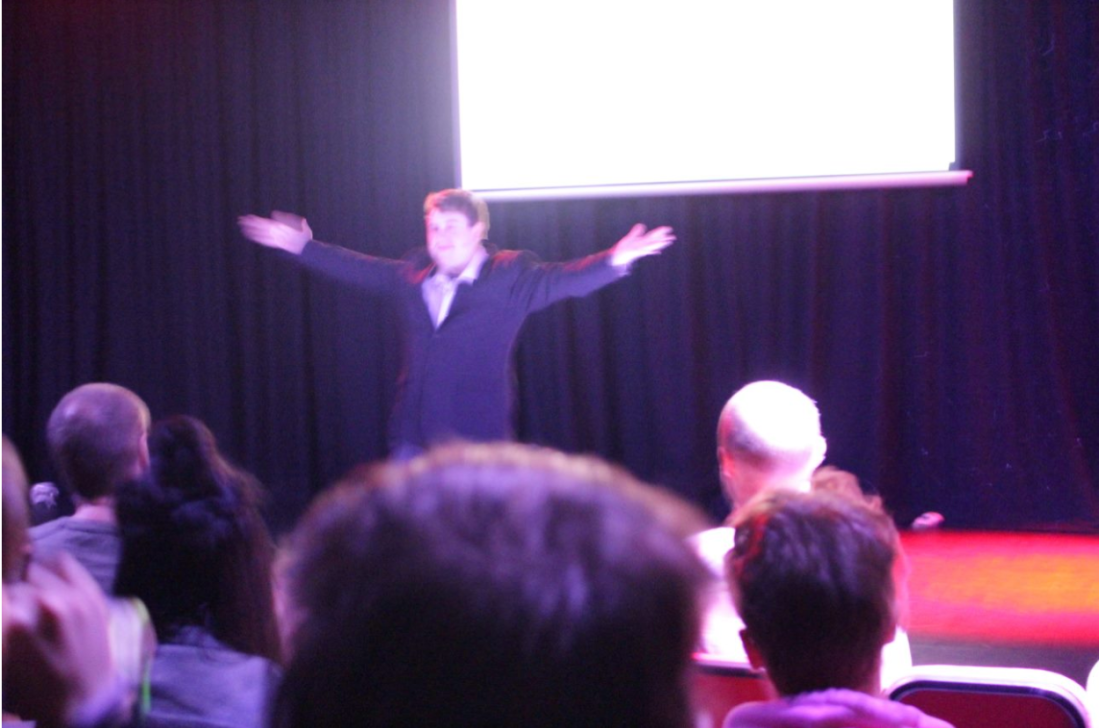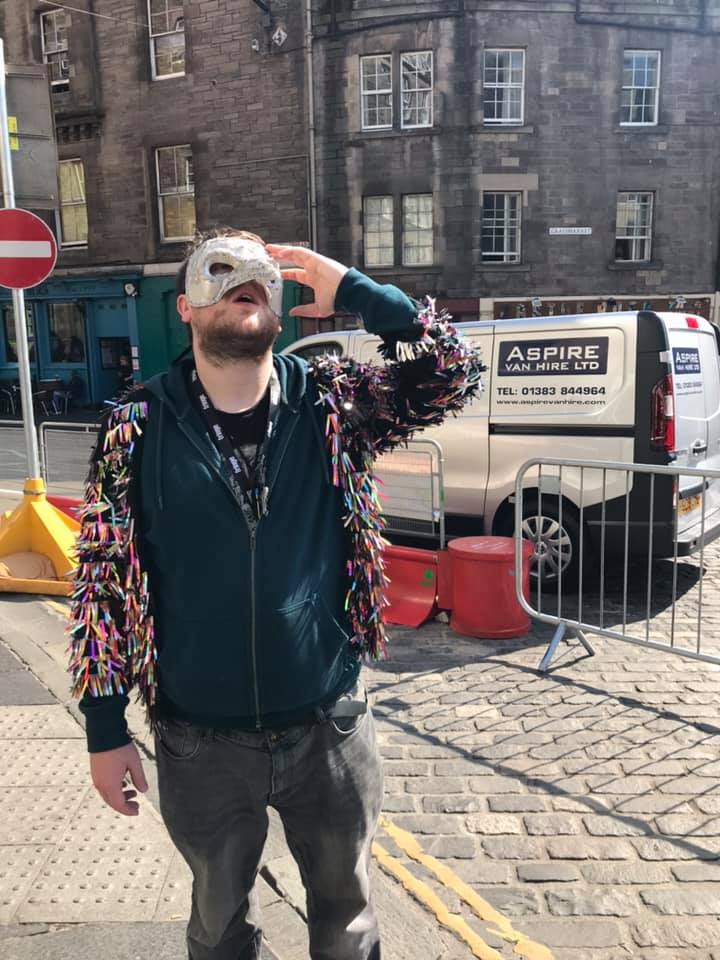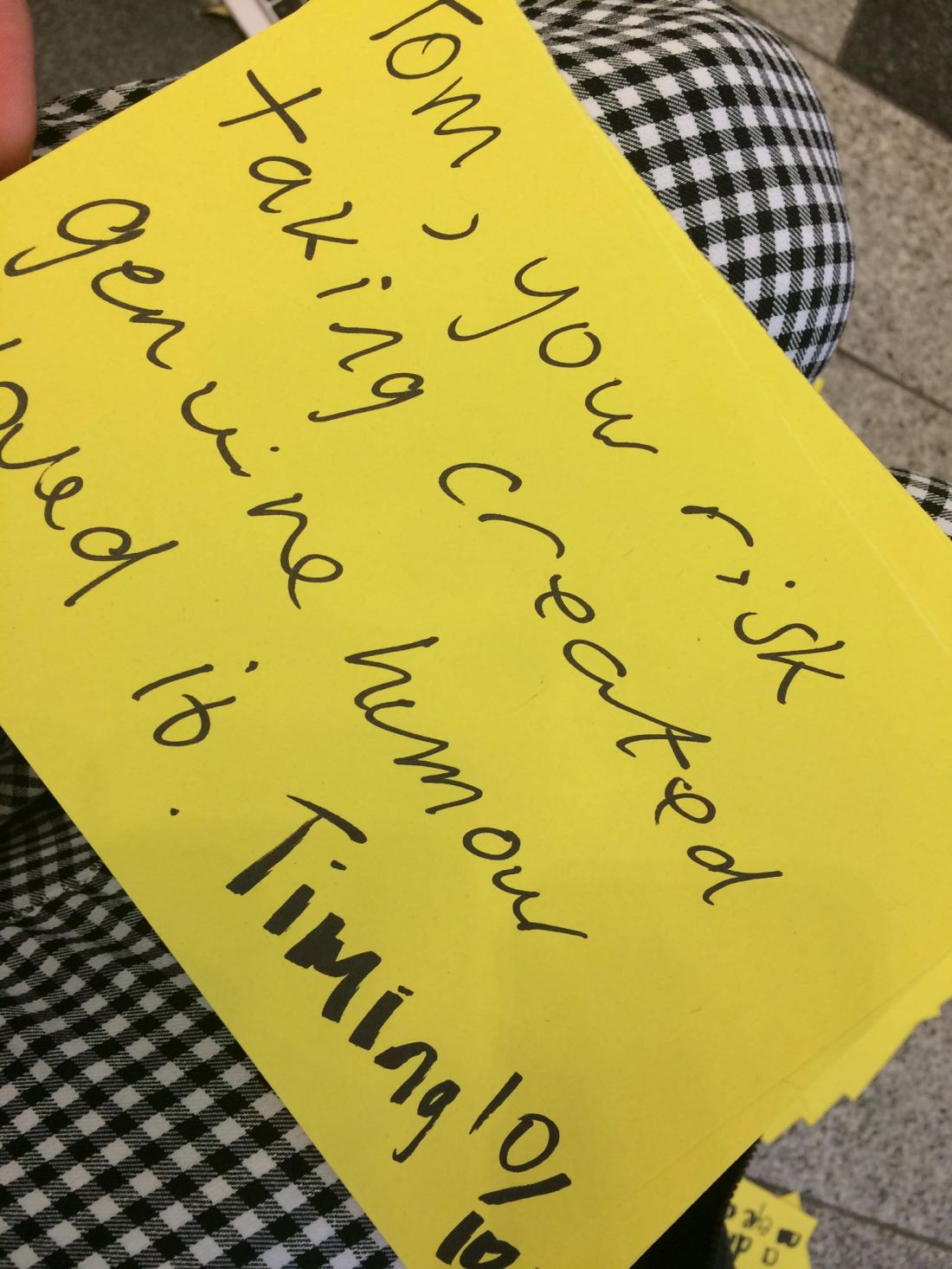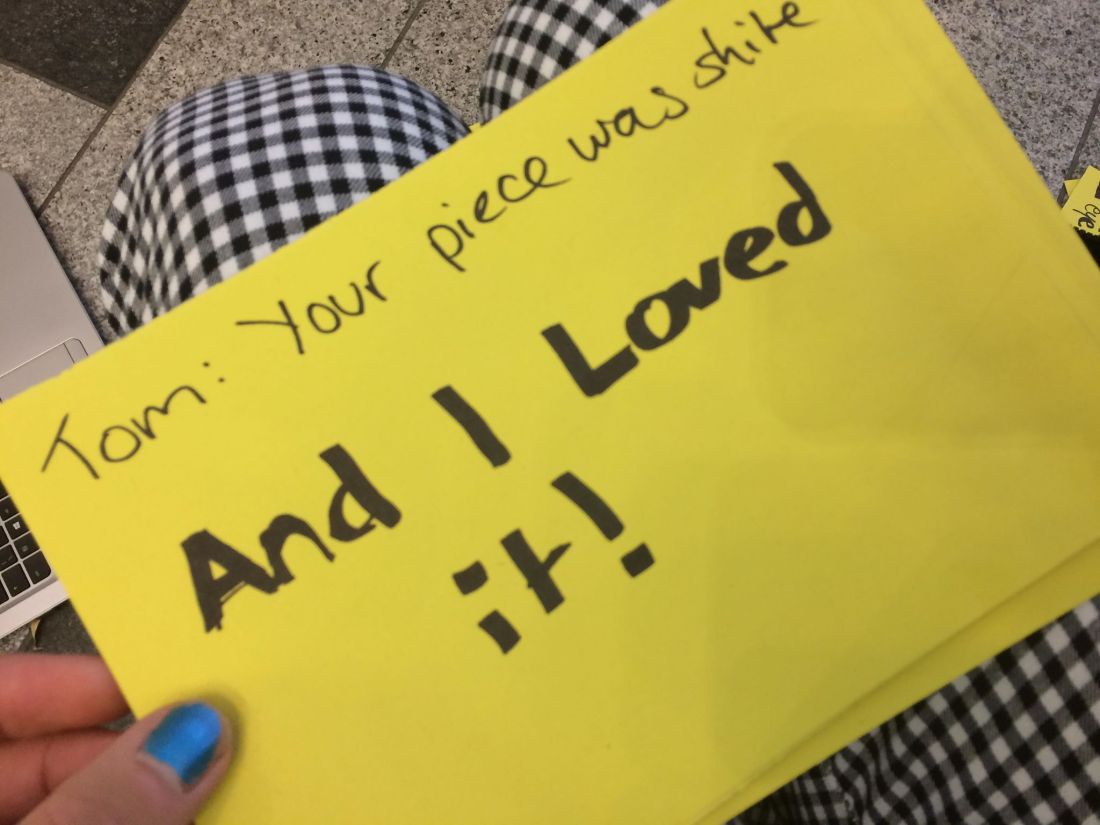Artist statement
I am a comic artist that tries to create non-literate comic moments that are live in the space and often blur the boundaries of reality and performance. I am interested in making the audience feel deep guttural moments of laughter and extreme emotions constantly guessing what is coming next in the performance. I try to create an authentic comic experience. Content that exists live in the moment and also create digital content afterwards which is often from live recordings. I like to play games and try to create a ‘live audience’ (Rudlin & Crick, 1960) which is interactive. This is in response to how passive I feel mainstream comic performance often is. I incorporate elements of physical comedy, clowning, DIY aesthetic (Daniels, 2014), improvisation (Johnstone, 2007) and chance in my performance, which draws on classic commedia forms such as the arlecchino and other forms of persona and mask work is often at play. A core mechanism is the idea of fun and playfulness in my work which often is now missing in mainstream contemporary comic work ensuring that my performances stand out on any bill, festival or event.
Performance As Research project/Tom Short’s Special
For my PAR ‘Tom Short’s Special’ I decided to stage my comic work as a comedy special and American style tv show as I believe this has a lot of room for experimentation and exploration.
My key inquiries were an avoidance of deadly theatre (Brook, 1968) and to create ‘non-literate [comic] phenomena’ (Bevis, 2016) rather than just literate comic moments. I am interested in Allan Kaprow’s chance and happenings (Kirby, M and Dine, J 1966) as I believe these are the most exciting art form and help push me away from deadly theatre and the passive comic experiences that I believe contemporary comedy has in abundance due to how cheap comic performance can be to create for television. This is currently exacerbated further by the oversaturated nature of the comedy industry. Andy Kaufman is a big influence for me particularly the deception of the audience to heighten the comic experience.
I tested the PAR project out at the Edinburgh fringe as an external research project. As my work is so interactive I require an audience to do a lot of my experimentation which I think makes my work exciting from conception to execution. When working with clown lab they said ‘A clown can not exist on his own’ (Robinson, 2019). Which was a big element behind my decision to make this an external research project. Another reason was since I was looking to subvert the comic industry, to stage elements of it at the Edinburgh fringe helps my purpose in the piece. Edinburgh Fringe has heavy links to the contemporary comedy industry.
The piece can only exist that one time because to do it again would be counterproductive and the recorded version is in my mind now a different work. The live deception elements at play and interaction between live and recorded media means that I managed to make a happening as Kaprow would define it. A blurred piece of art and reality leading up to, during and after the performance as the PAR project will be turned into a recorded special for distribution online further blurring the nature and intention of the piece.
Video, particularly online video is probably the best way to document the intent and focus of my performance especially when I have control of the editing process. I don’t think video can ever fully capture my work outside of live performance. I feel it is somewhat a short coming to how stripped back contemporary comic performance is, combined with how video does not capture properly comic non-literate phenomena (although it is possible).
PAR Annotations

I picked this outfit as an echo of Late night with with Conan O’Brien (1993), The tonight show with Jay Leno (1992) and Andy’s Funhouse (1979) as a clue as to what people were about to see and what was going to be subverted.
This is my tour of Sealife in Blackpool which I filmed before the course began. I created it in the run up to the PAR as one; an opportunity to practice my comic documentary skills again, and two; as a continuation of my output of these type of videos. This also gave my documentation in Edinburgh further credibility to have it as a series of comic site specific investigations rather than a one off.

I purchased an arlecchino mask which I used along with some other commedia masks as an opportunity to experiment with the classical mask and persona work I have developed. I practised some mask work in the streets. Eventually the masks formed part of the set in the PAR as a subtle nod to what theatrical elements were at play.
PAR Feedback
I have some of the audience feedback here:
I am pleased that the risk taking was noticed, although I dialed back on the random chance for the piece I was worried that the risk may be lost.
 This I feel is a sign my want to incorporate DIY aesthetic along with failure and clowning was performed effectively.
This I feel is a sign my want to incorporate DIY aesthetic along with failure and clowning was performed effectively.
PAR Research
Much of my PAR research has been blogged here
My PAR piece is built on the research and experimentation from my ACP and DYP modules.
My ACP piece came from wanting to subvert the hegemonies in mainstream stand up or at least as I saw them. However I felt too restricted by the voiceover utilised and sought to break this up.
My ACP piece can be seen here.
Much of my ACP research was documented here.
My DYP project was birthed from how I felt restricted in my ACP work and wanted to add more elements of chance and risk which I managed with the chance wheel.
My DYP piece can be viewed here
My DYP research was documented here
Each of my works I have felt have been their own entity and paradoxically part of a linear body of work. My ACP and DYP projects have given birth to various aspects in the PAR. Examples being the awkward silence and the telling the same joke routines being directly taken from the DYP work and the chance I created by asking for a joke from the audience which had immense amounts of risk involved. The ACP work was channeled in the video segments particularly the live reactions to recorded medium which is something I am interested in exploring more in the future.
Bibliography
Bevis, M (2017) Comedy a short introduction. Routledge. London
Brook, P. (1968) The Empty Space. London: Penguin.
Daniels, R. (2014). DIY. Chichester. University of Chichester.
Johnstone, K. (2007) Impro. London: Methuen Drama.
Kirby, M and Dine, J. (1966) Happenings. 1st ed. Routledge. London.
Robinson, A. (2019) Clownlab, Performers playground. The Lowry.
Rudlin, J and Crick, O (1960) Commedia Dell’arte : A Handbook for Troupes. London: Routledge, Print.
Audio visual references
Andy’s Funhouse (1979) ABC. August 28th
Late night with with Conan O’Brien (1993) NBC Universal. 13th September
The tonight show with Jay Leno (1992) NBC Universal. 25th May